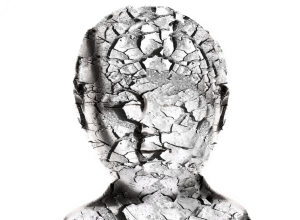Project Description
Burnout
Laurence specialized in burnout at the Centre de formation en Sophrologie (CEAS) with Florence Parot, a sophrologist who herself suffered from burnout and now director of the Sophrology Academy.
This term, which literally means “burnt from the inside”, was developed during the 70’s by American psychiatrists and is still a current issue. A recent study from the Technologia Cabinet has estimated that more than 3 million people have a high risk of suffering from burnout in France. Despite the high number of people at risk, people still do not have a clear idea of what burnout is and it is not recognised as a professional illness in June 2014. Unlike commonly received ideas, a burnout is not synonymous with depression.
If depression has multiple causes, the syndrome for exhaustion at work is exclusively due to stress. But what is stress? According to the European Agency for Safety and Health at Work, this phenomenon happens when there is an “imbalance between the perception of the constraints imposed by the environment and the perception that we have of our own resources to be able to face them”.
Who is particularly at risk?
They are often people who are perfectionists, highly motivated, extremely involved, always available, ambitious, suffering from psychological harassment at work, having an overly demanding boss, people who tend to say yes all the time, or people who seek acknowledgement.
According to Ayala Pines, renowned for her works on burnout, this pathology generally occurs when an important state of motivation crashes because the goal has disappeared. She sums it up perfectly by saying: “To be consumed one must have been firstly in flames”.
Warning signs
Most of the time, people do not see it coming. Yet there are some preliminary signs, like somatic problems and irritability, which can fade spontaneously, if one is prepared to slow down.
How does one end up in a burnout?
- Warning signs: back pain, sleeping problems, irritability.
- Resistance: occasionally severe insomnia, lumbago, fatigue, weight gain/loss, fits of crying, aggressiveness and/or lack of concentration.
- After this stage, burnout occurs
- Exhaustion: fatigue and chronic pains that move from one part of the body to another, in the back, shoulders, and neck… and above all, a physical and emotional tiredness. At this stage, the difference between burnout and depression is that for the latter this tiredness disappears by taking a break from work (a weekend, holidays…).
If this first stage of exhaustion persists, the burnout leads to its second stage: the “depersonalisation” phase. Since the subject is a very involved and dedicated person, they will not necessarily recognize themselves in their work. This tends to trigger a defence mechanism that revolves around cynicism.
If this phase persists, a sudden rupture occurs:
- a person cannot get up as they may have paralysing sciatica,
- a stroke,
- a heart attack,
- it can also be a “decompensation” on the psychological spectrum through a sudden action (deliria, suicidal urge: “I’m going to kill myself to be able to sleep”).
This feeling is always as if something has snapped inside.
How can sophrology help?
Sophrology can help people regain contact with their own body, which they have not listened to for so long as they have gone beyond their own limits, and to also help them to learn to let go. It also allows one to accept oneself and to help remove any feelings of guilt.
Techniques:
Numerous techniques help fighting stress and more specifically burnout.
For example:
- Conscious breathing (abdominal, thoracic, full) in order for the person to become aware of the ability to control their breathing.
- Basic techniques: loosening up/letting go with the help of relaxation, concentration and positive visualisations, getting rid of negativity (physical and psychological tensions) in each body part, vital activation (energy, heat, blood circulation), as these people often suffer from fatigue and have no energy left.
- Working on qualities/capacities can be interesting for self-confidence, since these people have a tendency to depreciate themselves and think their skills are worthless. This is done notably with the help of synchronised breathing (breathing in: “I activate confidence”/ breathing out: “I diffuse confidence”).
- Future programming to prepare for a possible return to work via positive visualisations.
Expectations
Movements, exercises and taught techniques during sessions are simple and can be rehearsed at home when alone. The idea is to head towards autonomy so that they can be the main actor in their battle against burnout.
Sessions
During the first session, the sophrologist will discuss with the person the exact goals and at the end of the session will agree the number of sessions needed. This is usually between 5 and 8 sessions, but this depends on the person’s motivation and goals. It is to be kept in mind that each person is unique and each burnout is also unique. In other words, each approach is evidently going to be different according to the stage of burnout that the person is in.
The sophrology sessions are generally held once a week. It is also recommended to practice the exercises at home for better results.
The company is in principle compelled to assist in the process.
For more information regarding the procedure of each individual session, please click on the link here.
For more information regarding fees, please click on the link here.
Please remember that these sessions should not replace any other sessions or treatment you may be following elsewhere, for example with your medical practitioner or psychiatrist.

